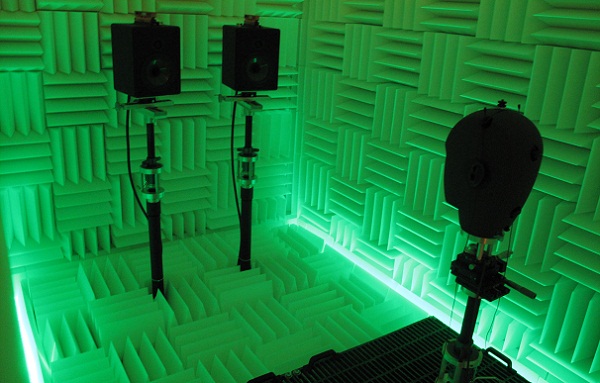New 3-D Sound System Elicits 'Visceral Reaction,' Inventor Claims

With well-placed speakers and some clever engineering tricks, it’s possible to create a “surround sound” audio experience that mimics real life. But Princeton University professor Edgar Choueiri wasn’t fooled by the techniques developed so far.
“With surround sound you get a feeling of sound around you, but you can’t fool someone into thinking that a person has walked up to you to whisper into your right ear, or that a fly is flying around your ear,” said Choueiri, a mechanical and aerospace engineer.
Choueiri says he’s developed a true 3-D audio system that could revolutionize your next movie experience because it is much truer to life.
People who have experienced a demonstration "had a very positive reaction, almost shocked,” Choueiri said in a phone interview. “People are used to stereo or surround sound and suddenly they hear a person going around their head with a scissors giving them a haircut. They have visceral reaction.”
The challenge
3-D sound does more than merely surround you: It enables your brain to paint a three-dimensional audio image of an event. For example, when listening to a symphony orchestra via just two loudspeakers, you’ll be able to hear the bass playing on one side of the concert hall, the violin on the other, just as you would in the concert hall itself. In real life, though, the sound of the both the violin and bass would combine and reach your left and right ears at different times. Your brain analyzes these impulses near instantaneously and determines exactly where the sound must be coming from.
So, to record for 3-D audio via two loudspeakers all you need is two microphones, Choueiri said. If the microphones are placed inside the ears of a dummy head, the microphones will record the correct 3-D queues needed for humans to hear in 3-D.
Get the world’s most fascinating discoveries delivered straight to your inbox.
Sound too simple? Indeed. The trick in producing 3-D audio lies not in the recording, but in the playback.
If you play these recorded queues back in two regular loudspeakers, your right ear will hear the queues intended both for right and left ears, as will your left ear.
“These queues get corrupted when your left ear hears the right speaker and your right ear hears the left speaker,” Choueiri said. “This is called crosstalk. And without cancelling the crosstalk the queues get mixed up and your brain won’t get the information it needs to hear in 3-D.”
The solution
Choueiri created an invisible wall, or filter, between two speakers to ensure that your right ear hears only what comes from the right speaker, and your left ear hears only what comes from the left. The effect, not new to science, is dubbed crosstalk cancellation. The real tricky part — and this is where Choueiri and his team at Princeton’s 3D3A Laboratory came in: The filter had to maintain a sound’s integrity.
“Previously any attempt to do crosstalk cancellation resulted in strongly coloring the sound to the point where you would not accept it as tonally correct,” said Choueiri. “Any listener would just realize that’s not a piano anymore. That sounds like something else. Our contribution was crosstalk cancellation without coloring the sound. That’s what makes this technology commercially feasible and acceptable to the human ear.”
In other words, the piano still sounds like a piano.
3-D sound will enter the commercial market within a few months, Choueiri said. He declined to give details, but told InnovationNewsDaily that a company that now has a product on the market without 3-D audio will bring out the next generation of that same product with 3-D audio.
Follow InnovationNewsDaily on Twitter @News_Innovation, or on Facebook. This story was provided by InnovationNewsDaily, a sister site to LiveScience.


